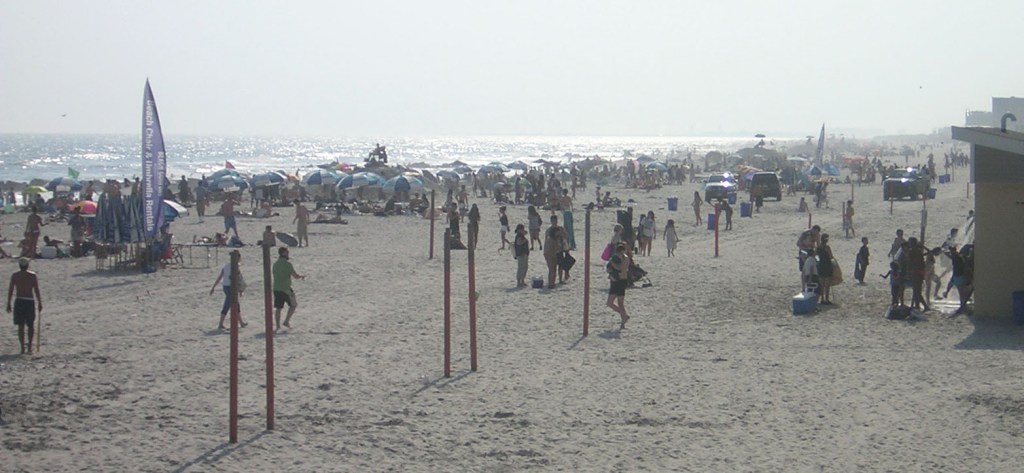Beachgoers have begun swarming to the shores of Long Island to cool off now that school is out and summer is in, but the region’s favorite pastime isn’t all fun and games.
To keep a day at the beach from turning into a trip to the emergency room, swimmers—and in some cases, even sun worshipers who stay on the sand—should be careful of common local hazards ranging from pollution to rip currents.
“As we enjoy the start of summer at our beautiful beaches, it’s important for neighbors to recognize the joy of playing in the ocean is accompanied by the potential for danger,” warned Hempstead Town Supervisor Kate Murray.
LI’s shores are not alone in giving bathers something to worry about. Florida leads the nation in shark attacks with the Carolinas close behind given the upswing in recent incidents, some California beaches have been cleaning up oil inexplicably washing ashore and the Gulf Coast is still recovering from the BP oil spill five years ago.
Although the issues on the Island aren’t as dangerous as shark bites and oil spills, there are still some risks that can roll ashore worth keeping in mind. Here are six:
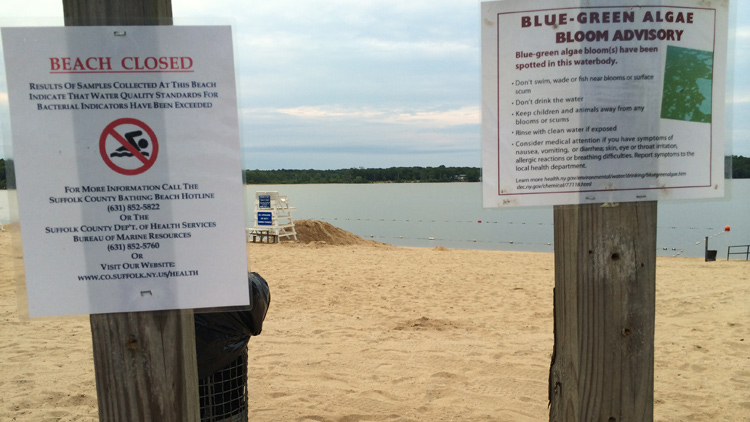
A Day At The Petri Dish
Rain doesn’t only keep sunbathers away from the shore when the skies open up, but also can force health officials to temporarily close beaches on sunny days that follow storms.
That’s because stormwater runoff washes pathogens—disease-causing bacteria or viruses—into local waterways, which often prompts health officials responsible for testing the water quality to temporarily close affected bathing beaches the day after heavy rains. Bathing in bacteria-contaminated water can result in gastrointestinal illness, as well as infections of the eyes, ears, nose and throat, officials say.
Studies have shown that such pollution is the result of stormwater runoff washing domestic and wild animal waste as well as partly treated human waste from septic tanks and sewage treatment plants into LI’s bays, rivers and streams.
The National Resources Defense Council (NRDC) ranked New York 20th in beach water quality out of 30 states, according to last year’s annual report that examines beach closure data. The ranking by the nonprofit environmental group was the result of 13 percent of samples taken in 2013 exceeding the national Beach Action Value, a system developed by the federal Environmental Protection Agency to test safe levels of bacteria in the water.
Also contributing human waste to bathing beaches are some boaters who flush untreated sewage into local bays even though the EPA made doing that illegal when the South Shore Estuary, Peconic Bay Estuary and the Long Island Sound were all deemed a “no discharge zone” five years ago.
The public can help keep beaches open and prevent pathogens from entering waterways by disposing of animal waste properly, maintaining septic systems and reminding boaters to use a pump-out station. Before swimming, check local beaches for any posted warnings by calling Nassau County’s beach hotline at 516-227-9700 and/or Suffolk County’s beach hotline at 631-852-5822.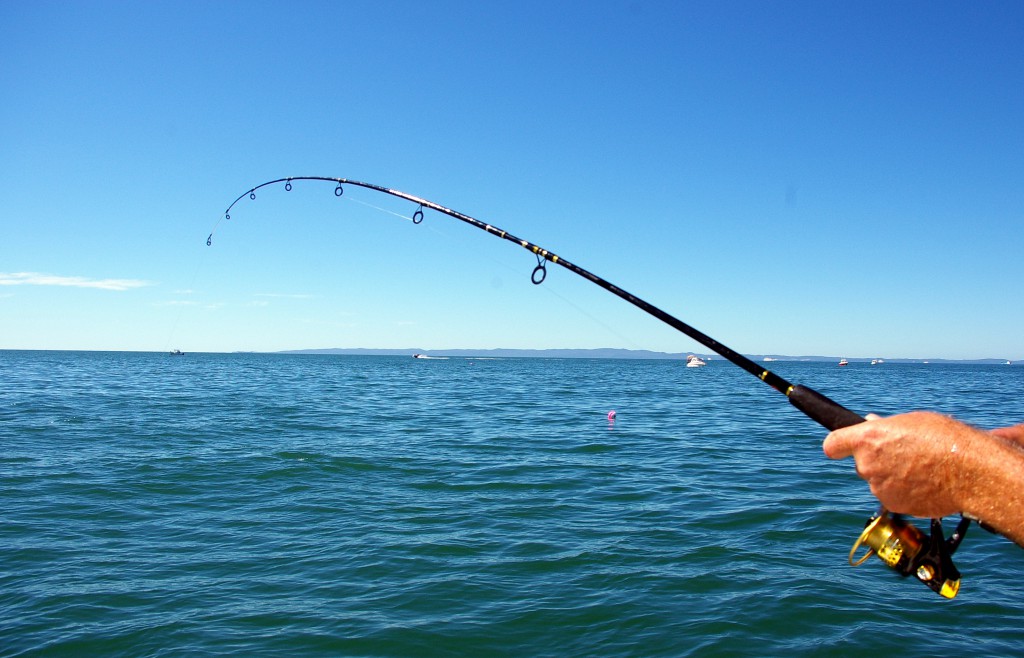 Toxic Tides
Toxic Tides
Aside from swimmers avoiding pathogens, those who go fishing or clamming in the waters off LI’s shores have another kind of pollution to worry about.
Years after industrial sources polluted the waters with heavy metals such as mercury and carcinogens such as PCBs, those and other toxins have been found in fish and shellfish caught off both the north and south shores of LI, studies have shown.
“The primary chemicals of concern in New York City waters and Long Island marine waters are PCBs, dioxin and cadmium,” the New York State Department of Health wrote in its pamphlet on eating locally caught fish. “In Long Island freshwaters the primary chemical is chlordane. These chemicals build up in your body over time.”
In its advisory, the health department suggests that fishermen and women limit eating fish caught in certain waterways, with extra precautions urged for children and women under 50. Fish caught in water farther offshore is less contaminated, the agency said.
Aside from issuing warnings for certain fish caught in Block Island Sound, Gardiners Bay, Jamaica Bay, the South Shore and Peconic Bay, there are also guidelines for freshwater fishing in lakes, ponds and streams around LI, including Freeport Reservoir, Lake Capri, Loft’s Pond, Smith Pond and Fresh Pond.
As for clams oysters and other shellfish, the state Department of Environmental Conservation (DEC) issued an emergency closure in May for shellfisheries in Shinnecock Bay after marine biotoxin contamination was found. For the latest advisories, call the DEC’s local shellfish office at 631-444-0480.
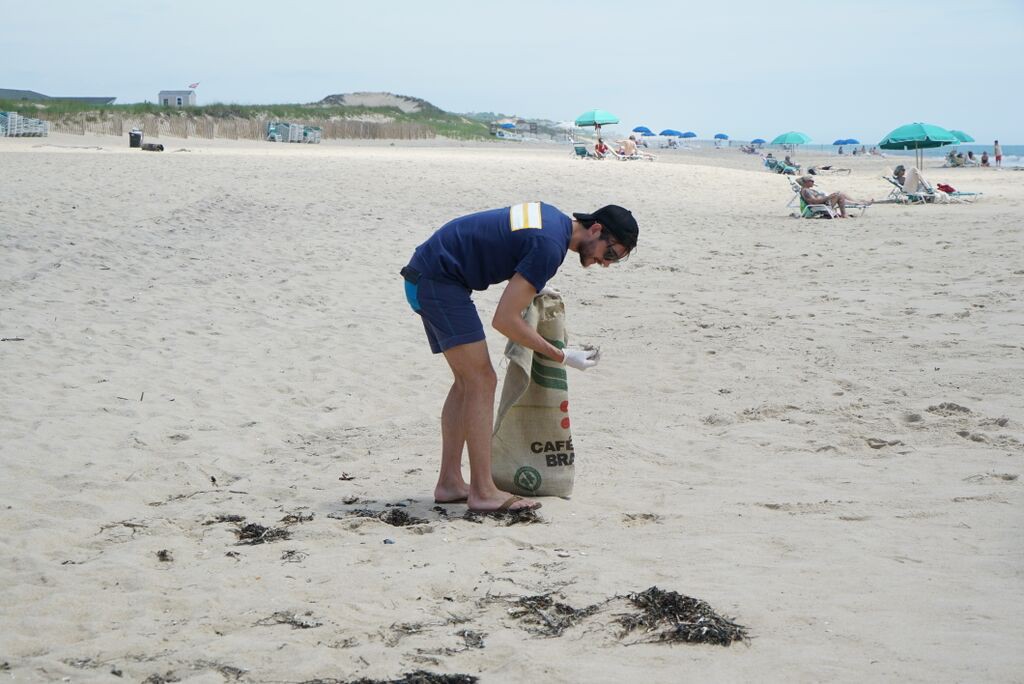
Watch Your Step
Even those only going for a long walk on the beach should be careful of debris, as anyone who’s ever stepped on trash buried in the sand at Jones Beach State Park knows too well.
Broken glass, rusted metal and fishing line are just some of the garbage that can occasionally be found littering local shores. Not only is it unpleasant for humans to step on such trash, animals are often entangled in discarded ropes and fishing line.
“Last year, 56,891 volunteers cleaned and documented 92,677 pounds of debris along 245.52 miles of New York State’s shoreline,” The American Littoral Society said on its website. That total is about the weight of a fully grown sperm whale, which can reach a length of 59 feet.
The public can help by disposing of trash properly and volunteering for beach cleanups through the society, The Riverhead Foundation for Marine Research and Preservation and other environmentally oriented groups.
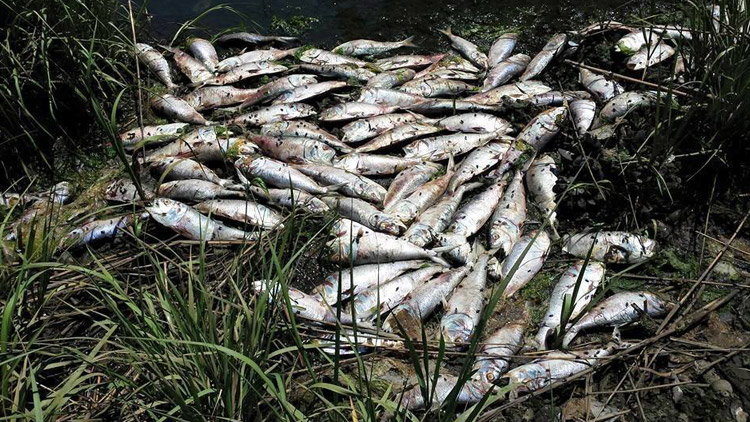
Red Tide is High
Look no further than the mass turtle die-off and back-to-back fish kills that flooded East End waterways with tens of thousands of dead bunker fish last month for proof that red tide is a problem on LI.
Officials and experts credited all three events in Flanders Bay to red tide—an overabundance of algae that contributes to the depletion of oxygen in the water and causes a host of other problems. The blooms are caused by nitrogen pollution.
“No question the biggest problem is nitrogen in our waters,” said Jim Gilmore, head of the state DEC’s Bureau of Marine Resources. “We have had several occurrences of fish kills but never of this magnitude. And nitrogen exacerbates the problem. We want the fish in the water, not dying on the beaches. Algal blooms fueled by nitrogen are making it worse.”
The toxic condition first emerged in LI waters three decades ago and is widely believed to have contributed to—along with overfishing—the collapse of the local shellfishing industry, which is now a shell of its former self.
Excess nitrogen leaches into local bays from a combination of sewage treatment plant outflow pipes, stormwater runoff and antiquated septic tanks. The problem is exacerbated in Suffolk County, where 74 percent of homes and businesses still use septic tanks since most of eastern LI isn’t hooked up to the public sewer system.
After the recent fish kills, local health officials warned the public not to touch the dead fish. But people should avoid contact with some of the algae blooms as well—notably the blue-green algae and red tide, which contains neurotoxins that can cause paralysis.
Pets are also at risk if they drink from water where blue-green algae is present. In 2013, a dog died after drinking water from an East Hampton pond that was contaminated with blue-green algae, or cyanobacteria. Similar fatal incidents have been reported nationwide.
Swimming in brown tide, which has been spotted in the South Shore bays this summer, is not known to be harmful. But ingesting water with high amounts of algae can be risky. An NRDC study found that those exposed to certain types of algae might suffer from a variety of symptoms such as neurological complaints, diarrhea, vomiting, respiratory issues as well as skin and eye irritation.
To help prevent algae blooms, choose organic compost instead of fertilizer for yard work and gardening.
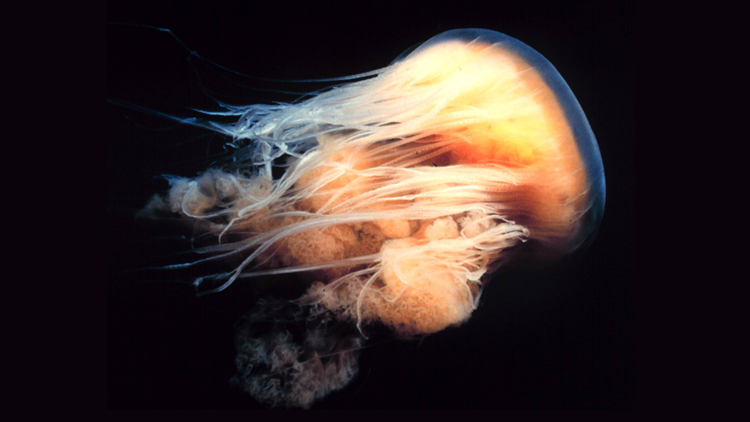
The Lion’s Den
Few things ruin a day at the beach like a jellyfish sting—especially if the culprit is the Lion’s Mane jellyfish, which is believed to be the world’s largest.
These big, bad jellies are native to the North Atlantic and are no strangers to LI waters. This species of jellyfish can grow to as large as 6-feet wide and 49-feet long. Although the lion’s mane jellyfish has a beautiful crimson-colored, bell-shaped head, be warned that these creatures’ tentacles can leave a very painful sting.
Take it from this reporter, who’s personally been stung by the lion’s mane: This jellyfish’s sting can lead to hives and blisters. Don’t ignore signs posted on the beach that warn about jellyfish in the waters, and always use caution when swimming. 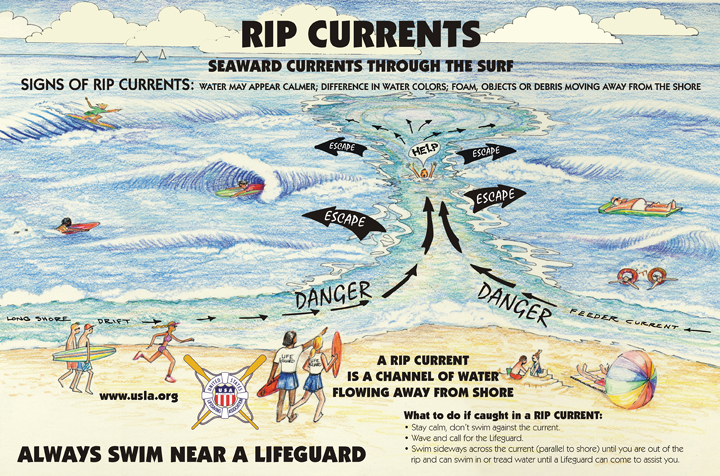 Beware ‘Grip of The Rip’
Beware ‘Grip of The Rip’
In addition to all of the above-listed hazards, top among them are rip currents.
Rip currents are channels of water that are caused by water pressure building up along the shoreline, according to the National Oceanic and Atmospheric Administration (NOAA).
While standing at the water’s edge, swimmers may feel a tugging at their ankles as the water pulls away from shore; this is the undertow. If the pull is strong enough, it can lead to drowning. While an undertow and riptides are dangerous, the number one danger is rip currents, mostly because people have an instinct to swim against it and exhaust themselves to the point of drowning.
“When we say beware of the ‘grip of the rip,’ we mean it,” said Hempstead Town Councilman Anthony Santino. “Even the most experienced swimmers can be endangered by rip currents, so it’s imperative to be prepared if a situation arises in the water.”
To escape out of a rip current, swimmers should remain calm, swim parallel to the shore and allow the oncoming waves to assist them back to shore. If a swimmer has enough energy, it is strongly advised to signal for help. Always remember to stay within areas that have lifeguards, and don’t swim too far away from shore.
Otherwise, have a blast at the beach but don’t forget your sun block.



